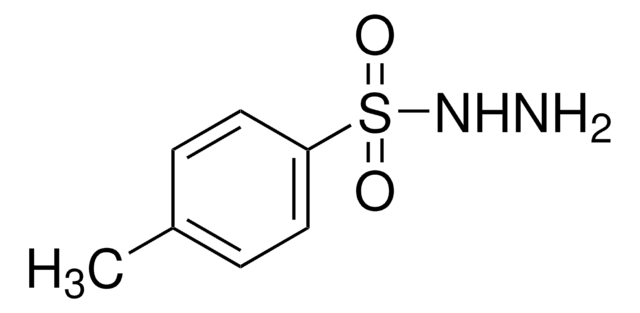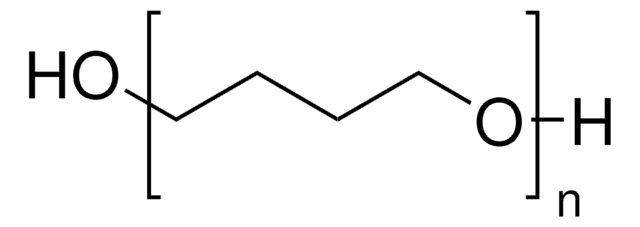Wichtige Dokumente
202355
Poly(propylenglycol)
average Mn ~4,000
Synonym(e):
PPG, Poly-(propylenoxid)
About This Item
Empfohlene Produkte
Dampfdichte
>1 (vs air)
Qualitätsniveau
Dampfdruck
<0.01 mmHg ( 20 °C)
Beschreibung
functionality 1.7
Mol-Gew.
average Mn ~4,000
Verunreinigungen
≤0.035% Water (Karl Fischer)
Viskosität
1,300 cP(25 °C)(lit.)
Hydroxylzahl
28 mg KOH/g
Löslichkeit
H2O: <0.01 % (w/w) at 25 °C
Dichte
1.004 g/mL at 25 °C
SMILES String
CC(O)CO
InChI
1S/C6H14O3/c1-5(8)4-9-6(2)3-7/h5-8H,3-4H2,1-2H3
InChIKey
DUFKCOQISQKSAV-UHFFFAOYSA-N
Suchen Sie nach ähnlichen Produkten? Aufrufen Leitfaden zum Produktvergleich
Verwandte Kategorien
Allgemeine Beschreibung
Anwendung
- As a precursor to synthesize biodegradable poly(ether-ester) networks via UV photopolymerization.
- As a stabilizing agent in the preparation of metal nanoparticles such as gold nanoparticles.
- As a starting material to prepare silane-terminatedpoly(urethane-urea)s (SPUR) polymers.
Lagerklassenschlüssel
10 - Combustible liquids
WGK
WGK 1
Flammpunkt (°F)
445.0 °F - closed cup
Flammpunkt (°C)
229.44 °C - closed cup
Persönliche Schutzausrüstung
Eyeshields, Gloves
Hier finden Sie alle aktuellen Versionen:
Besitzen Sie dieses Produkt bereits?
In der Dokumentenbibliothek finden Sie die Dokumentation zu den Produkten, die Sie kürzlich erworben haben.
Kunden haben sich ebenfalls angesehen
Artikel
A Review of Mesoporous TiO2 Thin Films
Global Trade Item Number
| SKU | GTIN |
|---|---|
| 202355-500G | 4061837796371 |
| 202355-250G | 4061837796364 |
| 202355-5G |
Unser Team von Wissenschaftlern verfügt über Erfahrung in allen Forschungsbereichen einschließlich Life Science, Materialwissenschaften, chemischer Synthese, Chromatographie, Analytik und vielen mehr..
Setzen Sie sich mit dem technischen Dienst in Verbindung.






